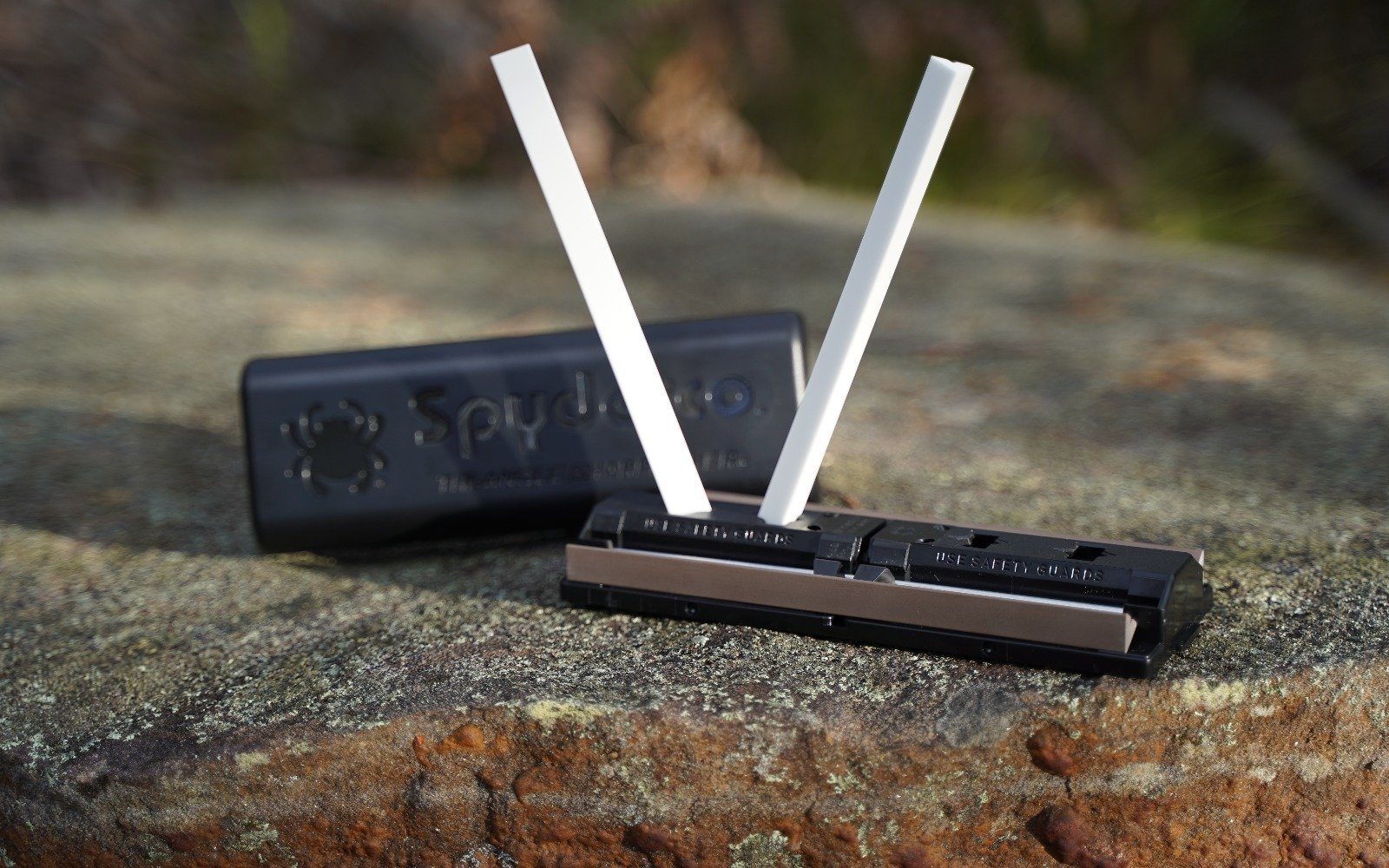When you invest in a quality set of knives, you’ll want to keep them in top condition so you can go on perfecting your culinary skillset for years to come.
There’s nothing worse than going to chop something up and encountering a blunt or dull blade. This setback can cost you time in the kitchen. To stop this from happening, it’s important to regularly make a point out of sharpening your knives so that they’re always good to go.
Here at Zanvak, we know a thing or two about keeping sharp. Here’s our list of tips and techniques on refining your tools safely and effectively.
The Best Way To Sharpen a Knife
1. Select your tool of choice
First, you need to choose your technique for maintaining your equipment. We stock a range of strops, grinders, diamond emulsions and plates to help keep your tools in check.
Typically we recommend using a sharpening stone as the easiest method. One of these is an absolute must-have when it comes to keeping your equipment in pristine condition.
When investing in a stone, consider its durability, hard-wearing nature and quality, as you want it to stand the test of time.
2. Choosing the right level of grit
It’s important to select the right level of coarseness or grit so that you can prepare your set quickly and efficiently, without damaging them in the process.
A coarse stone has more grit, therefore achieving a finer edge more quickly. If your blade is blunt or dull, you will need a coarser option. Coarseness is rated with a grit number.
Note: The higher the number, the less coarse it will be.
Here is our guide to give you a rough (or not so rough) idea:
Low-grit (grit number less than 1000) – These are best suited to blunt or dull knives.
Medium-grit (between 1000-3000) – Ideal for regular maintenance.
High-grit (between 4000-8000) – A much finer option, which is better suited to regular kitchen and food processing use.
3. Select the correct angle
The next step is to safely identify the right angle at which to sharpen. Generally, the lower the angle, the finer your knife edge will be – however this may result in chipping and less durability.
Typically, a 20 degree angle is recommended and will work well for most steel tools. This, of course, all depends on what you’ll be doing with them. As a general guide:
12 to 17 degrees: Ideal if you’re filleting, paring or slicing (basically not cutting into any hard surfaces). This angle will give you a finer edge.
17 to 25 degrees: This angle suits a wide range of your everyday blades, from kitchen knives, carving knives and chef’s knives.
25 to 30 degrees: If you’re cutting into a more solid surface (i.e.. outdoors with a hunting or pocket knife), an angle of a few degrees more is typically best.
30 to 35 degrees: Suits tougher, heavy duty options like cleavers and machetes.
However, this is just a guide. Don’t be afraid to trial and error to find what works best for you.
4. Apply some water or oil
You’ll need to lubricate the stone in order to prepare properly. Whether you use water or oil will depend on the kind of stone you have. It will usually say in the documents that came with the stone whether it needs water or oil.
Typically, if it’s a diamond or wet grinder you’ll need to treat it with water. Soak in water before use, then carefully dry it afterwards. You can also use a spray bottle to wet the stone.
For, a food-safe oil is better for others. The oil protects your knife and acts as a barrier against future moisture and acids.
5. Sharpen your knife
You can start to prepare your blade by following a few easy steps:
Take your knife and rest it against the stone at the correct angle.
Using a slicing motion, stroke the length of the blade across the stone following an arc shape, starting from the heel near the handle, and ending with the tip of the blade.
Important: Remember to stay at the right angle.
Blade should be facing in the same direction as your stroke. Never pull or drag your blade backwards.
Turn the blade to the other side and repeat the process.
Repeat these steps as often as needed until your knife is sharp.
After following this process, you’ll be good to go in no time – ready to prepare whatever culinary delights you dream up next. This way, you’ll always be prepared in the kitchen.
We have everything you need to get started
If you’re looking to upgrade your kitchen set-up with the right tools so your blades are always at the ready, get in touch with our friendly team today.
Our range includes quality brands such as TSPROF, Blademates, EZESharp, Edge Master, Jende Industries, KME and
more. We can recommend the perfect solution, from our knives and sharpening stones , to toolkits and emulsions that will get the job done.
You can also read up on our Care and Maintenance Tips for Knives here.

